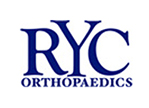Arthroscopic Surgery
Arthroscopy is a surgical procedure in which an arthroscope is inserted into a joint. Arthroscopy is a term that comes from two Greek words, arthro-, meaning joint, and -skopein, meaning to examine.
The benefits of arthroscopy involve smaller incisions, faster healing, a more rapid recovery, and less scarring. Arthroscopic surgical procedures are often performed on an outpatient basis and the patient is able to return home on the same day.
Click the desired topics below to find out more.
- Knee Arthroscopy
- Shoulder Arthroscopy
- Rotator Cuff Tear
- Shoulder Impingement
- ACL Reconstruction
- Hip Arthroscopy
- Elbow Arthroscopy
- Ankle Arthroscopy
Why is Arthroscopy necessary?
Diagnosing joint injuries and disease begins with a thorough medical history, physical examination, and usually X-rays. Additional tests such as an MRI, or CT scan also may be needed. Through the arthroscope, a final diagnosis is made which may be more accurate than through “open” surgery or from X-ray studies.
What are the joints that can be viewed with an Arthroscope?
Although the inside of nearly all joints can be viewed with an arthroscope, six joints are most frequently examined with this instrument. These include the knee, shoulder, elbow, ankle, hip, and wrist. As engineers make advances in electronic technology and orthopaedic surgeons develop new techniques, other joints may be treated more frequently in the future.
What are the conditions that can be treated by Arthroscopy?
Some problems associated with arthritis can also be treated. Several disorders are treated with a combination of arthroscopic and standard surgery.
Disease and injuries can damage bones, cartilage, ligaments, muscles, and tendons. Some of the most frequent conditions found during arthroscopic examinations of joints are:
Inflammation
Synovitis – Inflamed lining (synovium) in knee, shoulder, elbow, wrist, or ankle.
Injury – Acute and chronic.
Shoulder- Rotator cuff tendon tears, impingement syndrome, and recurrent dislocations.
Knee – Meniscal (cartilage) tears, chondromalacia (wearing or injury of cartilage cushion), and anterior cruciate ligament tears with instability.
Wrist – Carpal tunnel syndrome.
Loose bodies of bone and/or cartilage - Knee, shoulder, elbow, ankle, or wrist.
What is the rotator cuff?
The rotator cuff is a band of muscles that surrounds the joint formed by the upper arm bone or humerus that connects to the shoulder blade or scapula. The rotator cuff is stiff enough to hold the joint together, but is also flexible enough to allow the arm to reach and lift.
Rotator cuff injuries are common among baseball pitchers, tennis players and other athletes who frequently exert an overhand throwing or swinging motion. Non-athletes who engage in frequent lifting or reaching activities, such as stacking cans on a high shelf, can also develop rotator cuff problems.
What causes shoulder problems?
Most shoulder problems are the result of overuse or traumatic injury. Athletes who participate in contact sports, such as hockey or football, often suffer shoulder injuries. Frequent lifting and repetitive arm rotation can also cause wear and tear on the shoulder. Inflammatory diseases such as arthritis and bursitis may develop over time.
What are the types and causes of arthritis in the knee?
Osteoarthritis or Degenerative Joint Disease – The most common type of Arthritis. Osteoarthritis is also known as “wear and tear arthritis” since the cartilage simply wears out. When cartilage wears away, bone rubs on bone causing severe pain and disability. The most frequent reason for osteoarthritis is genetic, since the durability of each individual’s cartilage is based on genetics.
Trauma – Can also lead to osteoarthritis. A bad fall or blow to the knee can injure the joint. If the injury does not heal properly, extra force may be placed on the joint, which over time can cause the cartilage to wear away.
Inflammatory Arthritis - Swelling and heat (inflammation) of the joint lining causes a release of enzymes which soften and eventually destroy the cartilage. Rheumatoid arthritis, Lupus and psoriatic arthritis are inflammatory in nature.





